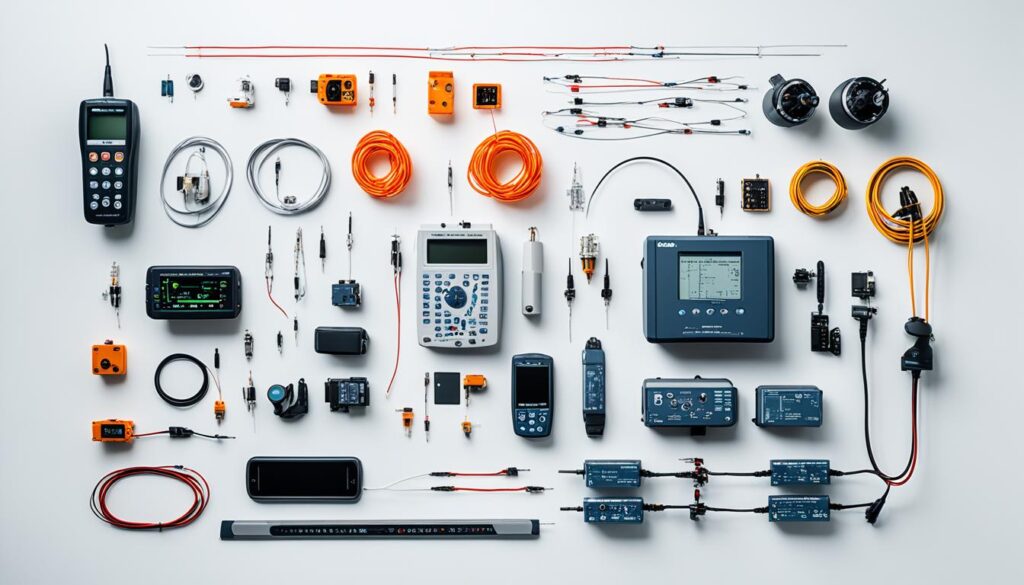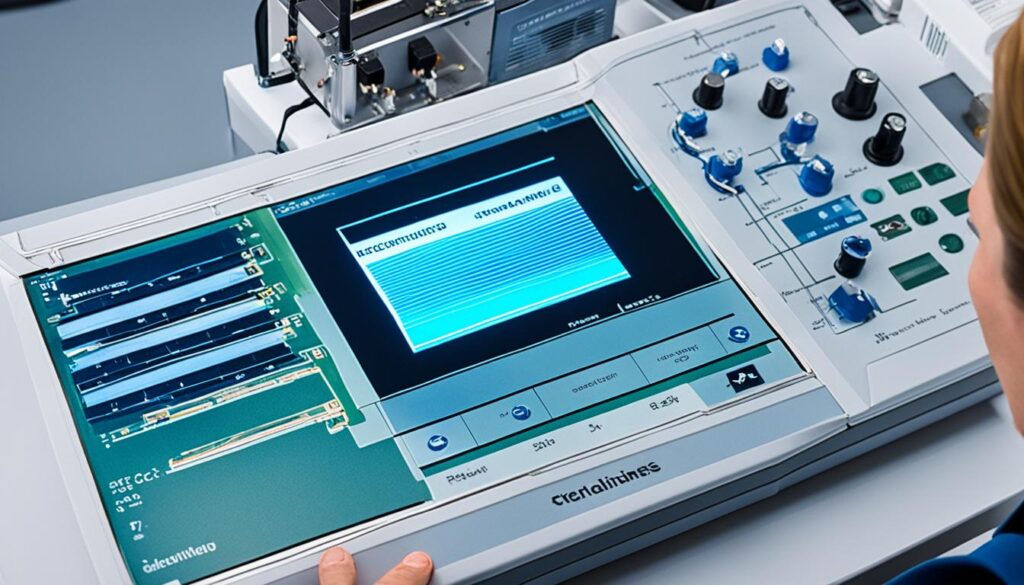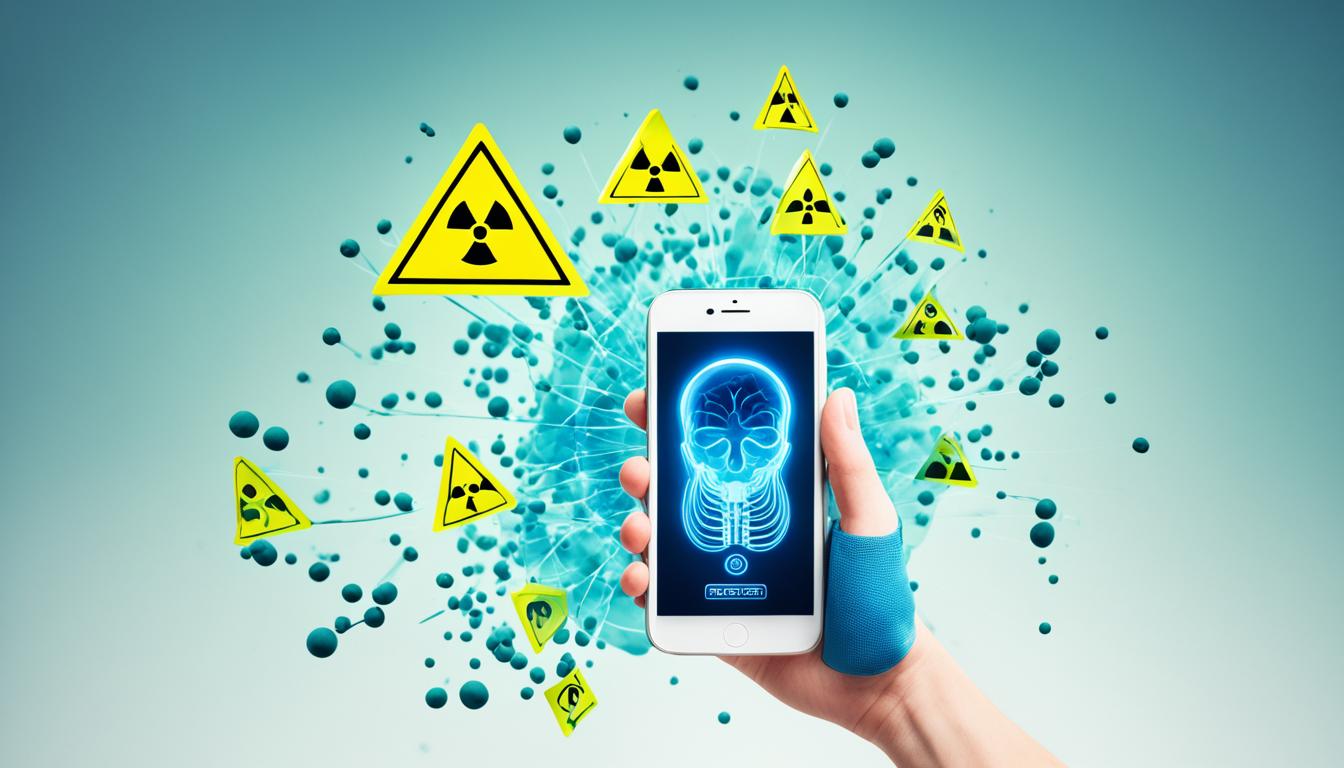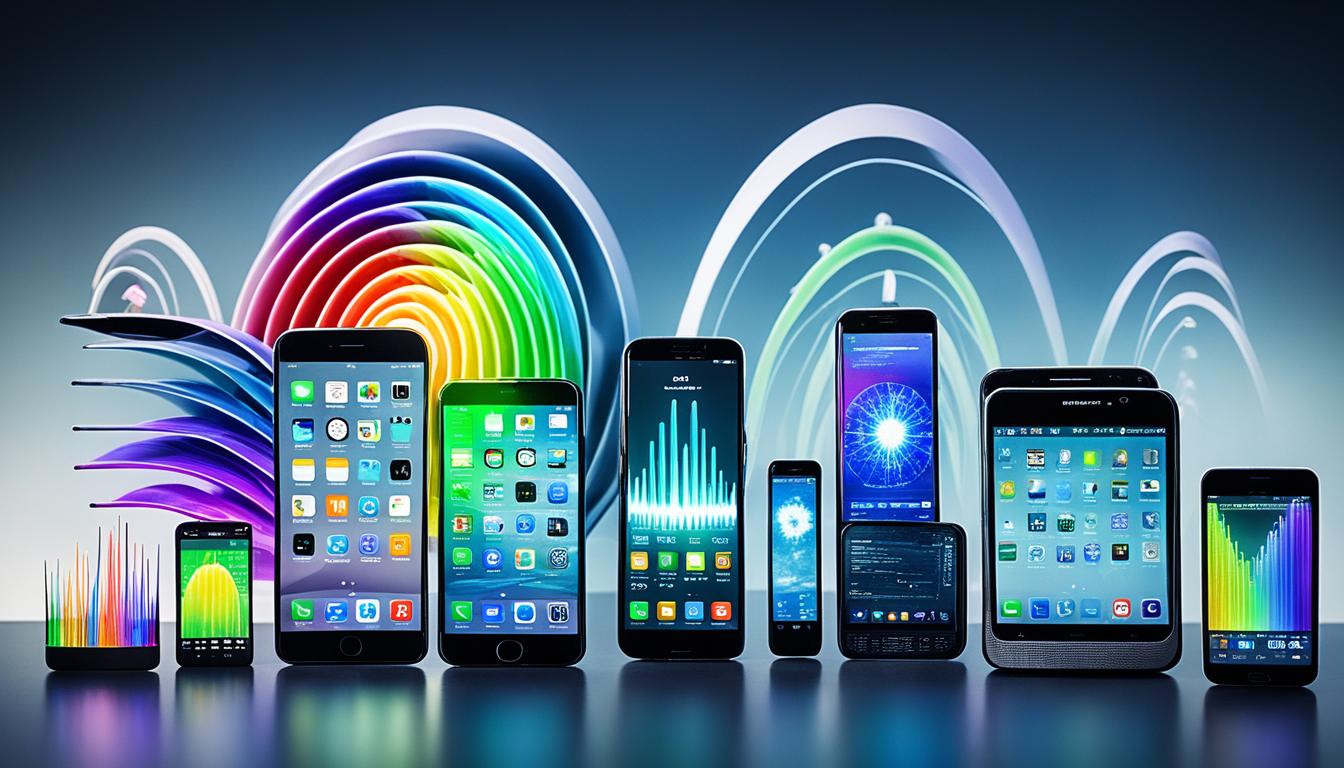Disclosure: This Post Contains Affiliate Links; We earn a commission on purchases.
The concept of specific absorption rate (SAR) might not be part of our everyday conversations, but it plays a pivotal role in ensuring the safety of one of our most used devices: the mobile phone. SAR is the unit of measurement used to quantify the rate at which the human body absorbs energy when exposed to a radio frequency (RF) electromagnetic field. Defined as power absorbed per mass of tissue, SAR values are typically represented in watts per kilogram (W/kg).
For consumers, understanding SAR safety levels is crucial to maintaining healthy interactions with technology. Whether you’re texting, calling, or simply carrying a mobile device in your pocket, awareness of mobile phone SAR levels is an integral part of responsible device usage. International guidelines dictate SAR limits to safeguard users from potential overexposure to RF energy. This introduction will walk you through the importance of SAR and why it should factor into your mobile phone choices.
Key Takeaways
- SAR measures the rate at which the body absorbs RF energy from devices like mobile phones.
- Expressed in watts per kilogram, SAR ensures user safety by adhering to regulated exposure levels.
- The significance of SAR safety levels in daily device use cannot be overstated for consumer health.
- Understanding mobile phone SAR levels can empower consumers to make informed decisions.
- Regulations are in place globally to standardize safe exposure and protect users.
Understanding SAR and Its Significance in Daily Technology Use
https://www.youtube.com/watch?v=d0GEByrNgOY
As we increasingly intertwine our lives with technology, the importance of being cognizant about our health in relation to tech becomes paramount. The term SAR value—or Specific Absorption Rate—is integral to this understanding, as it assesses our exposure to radio waves, especially in the frequency range from 100 kHz to 10 GHz, which includes the majority of consumer electronics like mobile phones and medical devices such as MRI scanners.
What is SAR?
The SAR rating implies the safety margin built into our device’s design: the lower the SAR value, the lower the rate of RF electromagnetic field energy absorption by the body. This energy can potentially cause thermal effects and change biological processes, making it crucial to regulate and monitor.
Why Is SAR Relevant?
With growing concerns over the potential health risks of prolonged exposure to RF electromagnetic fields, SAR ratings serve as a vital metric. They help consumers compare devices and make informed decisions, balancing the convenience of cutting-edge technology with the assurance of safety.
Different SAR Ratings Across Devices
Consumer electronics brands often boast about their low SAR ratings as a selling point, understanding that today’s tech-savvy consumers are attuned to the implications of these values. A comparison of the SAR ratings provided by different manufacturers highlights shifts in technology and changes in device usage patterns. As such, SAR measurements have become increasingly valuable information for anyone looking to purchase a new mobile phone or concerned about the devices they frequently use.
| Device | SAR Rating (W/kg) |
|---|---|
| Mobile Phone A | 1.1 |
| Mobile Phone B | 0.9 |
| Tablet A | 0.7 |
| Laptop A | 0.5 |
This awareness is not just about having a spec sheet, but about building a culture that promotes well-being in tandem with tech advancements. Just as we’ve grown accustomed to considering calories for body health, it’s time that SAR values become a standard reference when it comes to our technological well-being.
Measuring SAR: How It’s Done and Why It Matters
In today’s wireless world, SAR testing and SAR measurement are critical facets maintaining consumer safety in daily technology use. By delineating how SAR is measured, we can appreciate its significance in the devices we use every day—from mobile phones to medical equipment.

The Science Behind SAR Measurement
The process of assessing SAR values involves intricate scrutiny of energy absorption by the human body when exposed to electromagnetic fields. This assessment relies on the electrical conductivity of tissues, root mean square (RMS) electric field, and the sample density. SAR testing methods are highly dependent on these scientific parameters, as they directly influence the accuracy of the SAR value obtained.
SAR Testing Methods for Mobile Phones
SAR evaluation for mobile devices is especially pertinent given our constant interaction with such technology. This is enacted through the use of SAR Phantoms, which mimic a human head or torso, to determine the maximum rate of RF absorption near the phone’s antenna. SAR measurement is more than a mere procedure—it is imperative for designing safer technology that falls within the safety guidelines established by regulatory authorities.
Implications of SAR Values for Consumer Safety
Understanding the SAR value of your mobile device is not only about grasping a number; it reflects the extent of your exposure to radiofrequency energy. The outcome of these SAR test results is substantial, providing critical data that informs product design, manufacturing standards, and compliance with safety regulations—paving the way to ensuring public health remains uncompromised in an era dominated by wireless communication devices.
SAR (Specific Absorption Rate) Guidelines and Regulations
Across the international community, regulatory organizations enforce well-defined SAR guidelines and SAR regulation to protect consumers from the potential risks associated with radiofrequency exposure. Recognizing the importance of these regulations can empower users, manufacturers, and policymakers to align with safety protocols that are crucial in our technology-driven society.
FCC and European Limits on SAR Levels
In the United States, the Federal Communications Commission (FCC) has set stringent SAR limits to ensure electronic devices comply with safe exposure levels. The benchmark established by the FCC dictates that the SAR level for mobile phones should not exceed 1.6 watts per kilogram when averaged over a 1 gram volume of tissue. This regulatory standard is designed to safeguard users against the potential adverse effects of extended RF exposure.

Simultaneously, the European Union follows the International Electrotechnical Commission’s (IEC) standards to regulate SAR within its jurisdiction. EU regulations stipulate that SAR values for mobile phones should not exceed 2 watts per kilogram averaged over a 10 gram volume of tissue, enhancing protection for consumers using cellular devices.
Comparison of International SAR Standards
The global landscape of SAR standards reveals a commitment to consumer safety with specific emphasis on local norms and the technological environment. By harmonizing safety practices, these standards facilitate international trade while ensuring devices remain within safe operational thresholds. This chart illustrates the SAR limits as defined by both the FCC and the European Union:
| Region | SAR Limit (averaged over 1g of tissue) | SAR Limit (averaged over 10g of tissue) |
|---|---|---|
| United States (FCC) | 1.6 W/kg | N/A |
| European Union (IEC Standards) | N/A | 2 W/kg |
The discrepancies between SAR limits underscore the complexity of establishing a universally accepted standard, reflecting variations in consumer usage, technological advancement, and local safety concerns.
Random Compliance Tests and Their Impact on SAR Regulation
India represents a significant example of stringent regulatory practices by not only adopting the SAR limits set by the FCC but also instituting random compliance tests. These tests, which are conducted by the country’s Telecommunication Engineering Center, evaluate sample handsets to verify adherence to the stipulated SAR limits, ensuring the safety of mobile phone users in India and setting a precedent for proactive regulatory oversight.
This dynamic approach to ensuring compliance through random testing has a profound impact on SAR regulation. By incorporating these regular assessments, India contributes to the rigorous enforcement of SAR limits globally, encouraging manufacturers to maintain high safety standards across all markets.
SAR in Medical Contexts: MRI Scans and Patient Safety
Within the field of magnetic resonance imaging (MRI), the concept of specific absorption rate (SAR) is crucial. Employed as a key metric in MRI scanner SAR testing, SAR pinpoints the rate at which energy from RF pulses is absorbed by a patient’s tissues during the scanning process. Adherence to SAR limits is not just regulatory compliance but is integral to ensuring patient safety. These limits, delineated in the IEC 60601-2-33 standards, are specifically catered to different parts of the body exposed during MRI examinations.
The following table represents the SAR limits tailored for various body regions and operating modes during magnetic resonance imaging. By maintaining these values, MRI scans are conducted within safe boundaries, mitigating the risk of adverse thermal effects.
| Operating Mode | Whole-body SAR (W/kg) | Head SAR (W/kg) | Trunk SAR (W/kg) | Extremities SAR (W/kg) |
|---|---|---|---|---|
| Normal | 2 | 3.2 | 10 | 20 |
| 1st Level Controlled | 4 | 3.2 | 20 | 40 |
| 2nd Level Controlled | >4 | >3.2 | >20 | >40 |
Compliance with these SAR standards in MRI scanner SAR testing is a testament to the medical community’s commitment to patient safety. MRI technicians and radiologists carefully monitor these values, ensuring that each MRI scan maintains high diagnostic quality without compromising the well-being of patients.
It is the rigorous application of SAR limits and the continuous advancement in MRI technology that fortify the premise of safety in medical imaging. Thus, understanding SAR in the context of MRI is a foundational aspect of patient care and radiologic excellence.
Conclusion
In traversing the technological landscape where wireless devices surround us at nearly every turn, it’s increasingly critical to shine a spotlight on SAR safety levels. This article has guided you through the nuances of SAR and its vital role in maintaining health standards amid growing usage of RF-emitting devices. As intuitive and connected as our modern world is, the responsibilities of understanding SAR exposure and its health effects cannot be understated.
Importance of Public Awareness on SAR
Driving public knowledge on SAR imparts crucial empowerment, enabling consumers to wield their devices with not just dexterity but discernment. Learning about SAR values, how they are measured, and the regulations controlling them prepares individuals to navigate the tech realm safely and smartly. Educated decisions on product choices and behaviors translate into a safeguarded lifestyle in the digital age.
Future Outlook on SAR Research and Standards
Advancements in SAR research are on the horizon, signaling the possibility of sharpening existing standards and possibly introducing more stringent ones. This evolution in understanding RF energy’s interaction with biological tissues promises future enhancements in both safety regulations and technology design, ensuring that consumers continue to enjoy innovations without compromising their well-being.
Strategies to Manage SAR Exposure in Everyday Life
Proactive management of SAR exposure is within everyone’s reach. Simple yet effective strategies include using speakerphone features, wearing hands-free accessories, and maintaining a distance from devices when possible. Such habits contribute significantly to reducing SAR absorption levels and protecting one’s health. As we integrate electronic devices even more into our daily routines, being knowledgeable and taking practical steps to minimize exposure will serve as key defenses against the potential risks of RF energy.
Source Links
- https://en.wikipedia.org/wiki/Specific_absorption_rate
- https://radiopaedia.org/articles/specific-absorption-rate?lang=us
- https://www.sciencedirect.com/topics/engineering/specific-absorption-rate

Subscribe to Our Newsletter










